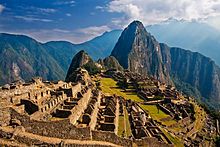Are you on the Department of Homeland Security’s Terrorist Watch List or No-Fly List? If you are, there is no way for you to find out but we now know what the criteria is and it’s pretty fast and loose with the rules. The Intercept investigative journalists Jeremy Scahill and Ryan Devereaux have obtained a copy of the guidelines from a document that was issued by the National Counterterrorism Center, the “March 2013 Watchlisting Guidance.” In an extensive article, they examine how the government is using secret rules “putting individuals on its main terrorist database, as well as the no fly list and the selectee list, which triggers enhanced screening at airports and border crossings.”
The new guidelines allow individuals to be designated as representatives of terror organizations without any evidence they are actually connected to such organizations, and it gives a single White House official the unilateral authority to place “entire categories” of people the government is tracking onto the no fly and selectee lists. It broadens the authority of government officials to “nominate” people to the watchlists based on what is vaguely described as “fragmentary information.” It also allows for dead people to be watchlisted.
Over the years, the Obama and Bush Administrations have fiercely resisted disclosing the criteria for placing names on the databases-though the guidelines are officially labeled as unclassified. In May, Attorney General Eric Holder even invoked the state secrets privilege to prevent watchlisting guidelines from being disclosed in litigation launched by an American who was on the no fly list. In an affidavit, Holder called them a “clear roadmap” to the government’s terrorist-tracking apparatus, adding: “The Watchlisting Guidance, although unclassified, contains national security information that, if disclosed … could cause significant harm to national security.” [..]
The document’s definition of “terrorist” activity includes actions that fall far short of bombing or hijacking. In addition to expected crimes, such as assassination or hostage-taking, the guidelines also define destruction of government property and damaging computers used by financial institutions as activities meriting placement on a list. They also define as terrorism any act that is “dangerous” to property and intended to influence government policy through intimidation.
This combination-a broad definition of what constitutes terrorism and a low threshold for designating someone a terrorist-opens the way to ensnaring innocent people in secret government dragnets. It can also be counterproductive. When resources are devoted to tracking people who are not genuine risks to national security, the actual threats get fewer resources-and might go unnoticed. [..]
The fallout is personal too. There are severe consequences for people unfairly labeled a terrorist by the U.S. government, which shares its watchlist data with local law enforcement, foreign governments, and “private entities.” Once the U.S. government secretly labels you a terrorist or terrorist suspect, other institutions tend to treat you as one. It can become difficult to get a job (or simply to stay out of jail). It can become burdensome-or impossible-to travel. And routine encounters with law enforcement can turn into ordeals. [..]
The government has been widely criticized for making it impossible for people to know why they have been placed on a watchlist, and for making it nearly impossible to get off. The guidelines bluntly state that “the general policy of the U.S. Government is to neither confirm nor deny an individual’s watchlist status.” But the courts have taken exception to the official silence and footdragging: In June, a federal judge described the government’s secretive removal process as unconstitutional and “wholly ineffective.”
The difficulty of getting off the list is highlighted by a passage in the guidelines stating that an individual can be kept on the watchlist, or even placed onto the watchlist, despite being acquitted of a terrorism-related crime. The rulebook justifies this by noting that conviction in U.S. courts requires evidence beyond a reasonable doubt, whereas watchlisting requires only a reasonable suspicion. Once suspicion is raised, even a jury’s verdict cannot erase it.
Not even death provides a guarantee of getting off the list. The guidelines say the names of dead people will stay on the list if there is reason to believe the deceased’s identity may be used by a suspected terrorist-which the National Counterterrorism Center calls a “demonstrated terrorist tactic.” In fact, for the same reason, the rules permit the deceased spouses of suspected terrorists to be placed onto the list after they have died.
Essentially, once a person is on these lists their Fourth Amendment rights are completely ignored, as Mike Masnick at Techdirt points out individuals are subjected to extra scrutiny, essentially allowing the government to sift through every aspect of a person’s life:
In addition to data like fingerprints, travel itineraries, identification documents and gun licenses, the rules encourage screeners to acquire health insurance information, drug prescriptions, “any cards with an electronic strip on it (hotel cards, grocery cards, gift cards, frequent flyer cards),” cellphones, email addresses, binoculars, peroxide, bank account numbers, pay stubs, academic transcripts, parking and speeding tickets, and want ads. The digital information singled out for collection includes social media accounts, cell phone lists, speed dial numbers, laptop images, thumb drives, iPods, Kindles, and cameras. All of the information is then uploaded to the TIDE (Terrorist Identities Datamart Environment) database.
Screeners are also instructed to collect data on any “pocket litter,” scuba gear, EZ Passes, library cards, and the titles of any books, along with information about their condition-“e.g., new, dog-eared, annotated, unopened.” Business cards and conference materials are also targeted, as well as “anything with an account number” and information about any gold or jewelry worn by the watchlisted individual. Even “animal information” – details about pets from veterinarians or tracking chips-is requested. The rulebook also encourages the collection of biometric or biographical data about the travel partners of watchlisted individuals.
At FDL’s The Dissenter, Kevin Gosztola discusses how this loop-hole ridden criteria violate a person’s rights and are inherently discriminatory towards Muslims:
There are a few general points to make in order to fully understand what this vague criteria for watchlisting means.
First of all, it is important not to ignore the anti-Muslim racism that likely influences a number of aspects of the watchlisting process. The idea that Muslims are “predisposed” to commit acts of violence is pervades the national security establishment. Training materials on fighting terrorism have been used by government agencies in previous years that deal with theories of “radicalization” and such training promotes prejudice, as evidenced by the fact that one NSA official used the slur “Mohammed Raghead” in an NSA memo.
Second, a federal district court in Oregon recently decided violated due process rights of Americans placed on the No-Fly List because it is nearly impossible to challenge inclusion and clear one’s name. The ACLU represented thirteen Americans, who have never engaged in any terrorist activity, in this case. Each person experienced hardship because they ended up on the No-Fly List.
The guidance shows why there needs to be a process established for getting off watchlists, especially the No-Fly List.
Finally, there is absolutely no reasonable justification for why this rulebook and any version of it from 2001 to 2014 should be secret. The watchlisting guidance is marked “unclassified.” There is nothing in it that will endanger any Americans.
Jeremy and Ryna sat down for an an interview with Huffington Post‘s Alyona Minkovski. During the discussion, Ryan called the these guidelines a “global stop and frisk program.”
Recently there were two court rulings that pertain to getting off the No-Fly list and a Supreme Court decision that bars warrantless searches of cell phones. Precisely how how those rulings will impact the guidelines remains to be seen but it is fairly obvious that the Obama administration has little regard for the rule of law.





Recent Comments